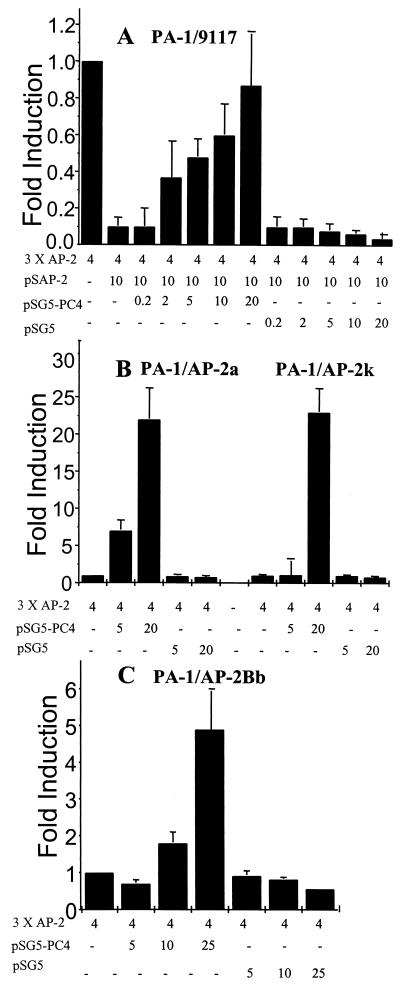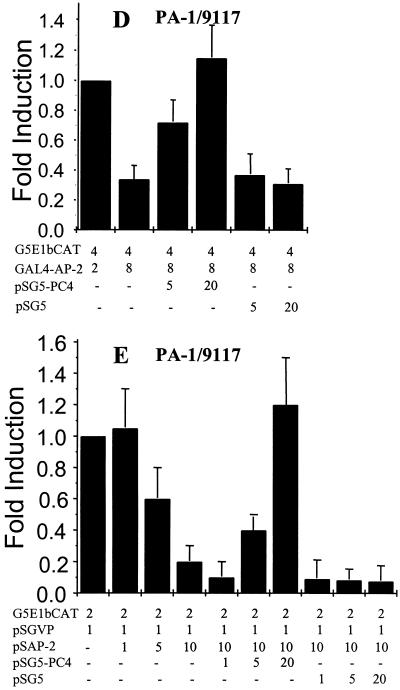FIG. 3.
PC4 relieves AP-2 transcriptional self-interference in PA-1 cells. Transient transfections and CAT assays were performed as described in Materials and Methods to determine the effect of PC4 on AP-2 activity. The amounts of the PC4, AP-2, GAL4–AP-2, and GAL4-VP16 expression plasmids and the reporter plasmids for AP-2 (3× AP-2–CAT) and GAL4 (G5E1bCAT) transfected in each assay are shown at the bottom. The fold activity shown on each panel was calculated by measuring the percent conversion of acetylated forms of [14C]chloramphenicol, assuming the endogenous activity to be 1. (A) Transfection of an expression plasmid of PC4 relieves AP-2 transcriptional self-interference in the 9117 PA-1 subline. (B) PC4 relieves AP-2 transcriptional self-interference in PA-1 cells stably overexpressing AP-2, PA-1/AP-2a, or PA-1/AP-2k. (C) PC4 relieves AP-2 transcriptional interference in PA-1/AP-2Bb cells, PA-1 cells stably overexpressing AP-2B (see reference 3). (D) PC4 relieves GAL4–AP-2 transcriptional self-interference. Note that PA-1 cells do not have endogenous GAL4 activity, and hence the GAL4 activity determined at low-level transfection of the GAL–AP-2 expression plasmid (1 μg) was taken as 1. (E) PC4 relieves AP-2 transcriptional cross-interference and restores VP16 activity.


